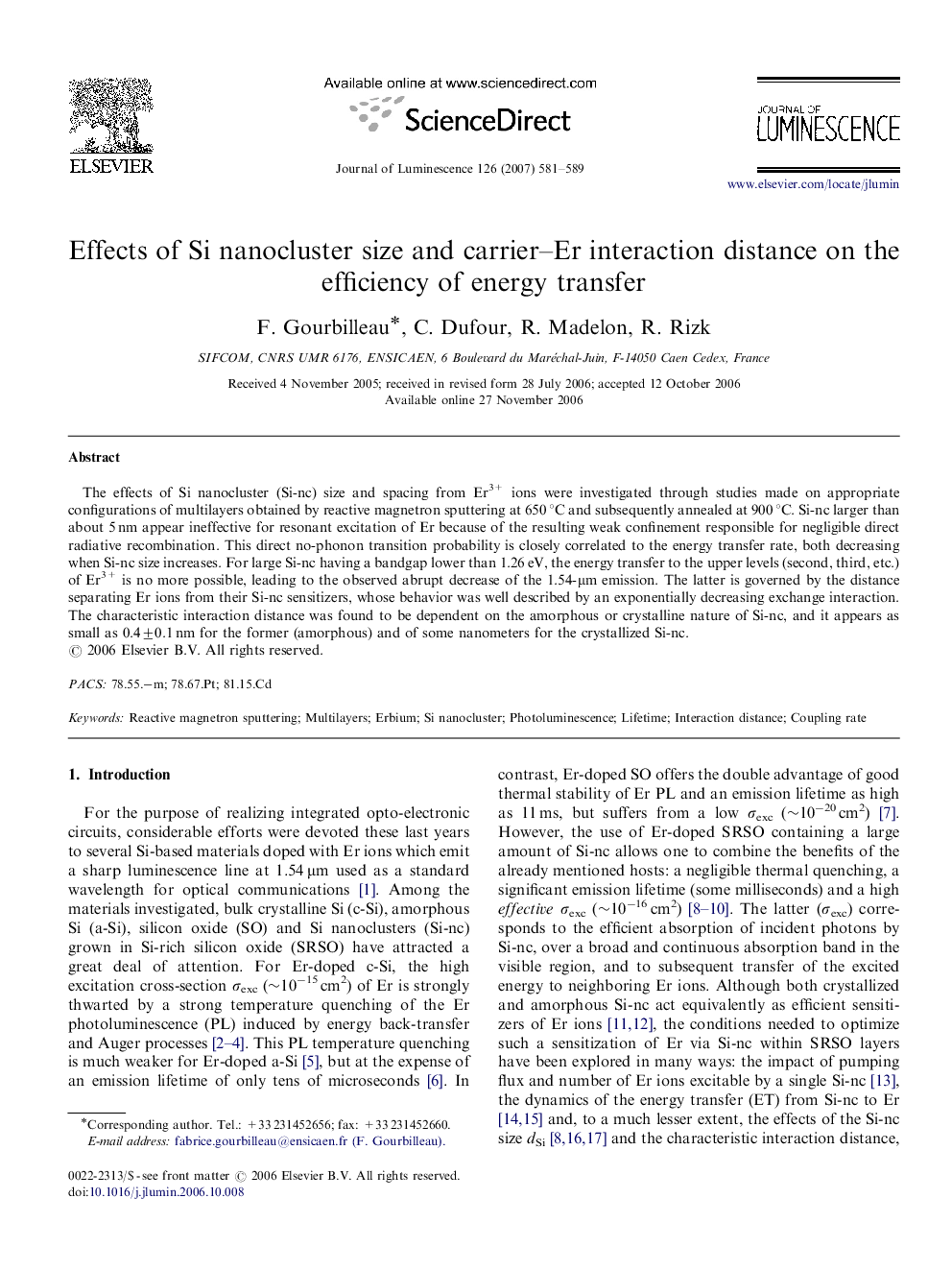| Article ID | Journal | Published Year | Pages | File Type |
|---|---|---|---|---|
| 5403374 | Journal of Luminescence | 2007 | 9 Pages |
Abstract
The effects of Si nanocluster (Si-nc) size and spacing from Er3+ ions were investigated through studies made on appropriate configurations of multilayers obtained by reactive magnetron sputtering at 650 °C and subsequently annealed at 900 °C. Si-nc larger than about 5 nm appear ineffective for resonant excitation of Er because of the resulting weak confinement responsible for negligible direct radiative recombination. This direct no-phonon transition probability is closely correlated to the energy transfer rate, both decreasing when Si-nc size increases. For large Si-nc having a bandgap lower than 1.26 eV, the energy transfer to the upper levels (second, third, etc.) of Er3+ is no more possible, leading to the observed abrupt decrease of the 1.54-μm emission. The latter is governed by the distance separating Er ions from their Si-nc sensitizers, whose behavior was well described by an exponentially decreasing exchange interaction. The characteristic interaction distance was found to be dependent on the amorphous or crystalline nature of Si-nc, and it appears as small as 0.4±0.1 nm for the former (amorphous) and of some nanometers for the crystallized Si-nc.
Keywords
Related Topics
Physical Sciences and Engineering
Chemistry
Physical and Theoretical Chemistry
Authors
F. Gourbilleau, C. Dufour, R. Madelon, R. Rizk,
